Learn more about the Amazon Rainforest spiders that inhabit the forest floor. Whether you’re a student or just curious, here are some of the world’s most disturbing eight-legged animals!
Amazon Rainforest spiders
Brazil is a country that boasts wildlife diversity featuring from the cutest to spookiest creatures, and the Amazonian spiders I’ll discuss in this article, well, they belong to the latter category.
Many people fear the spider species of the Amazon Basin, including me. After all, the region has some of the creepiest arthropods you and I both have ever seen.
Think of not only the world’s largest spiders but also some pretty venomous spiders too. Yes, the tropical rainforest in Brazil (or Peru, Ecuador, and beyond) is not a place to be lost at night.
In today’s article, I’ll talk about 5 creepy Amazon Rainforest spiders, what their diet consists of, and their habits.
Warning to arachnophobes and the faint of heart: This article contains photos of giant spiders, which can be terrifying animals for some people, so you might want to proceed with caution.
Amazon spiders
1. Goliath birdeater (Amazonian tarantula)
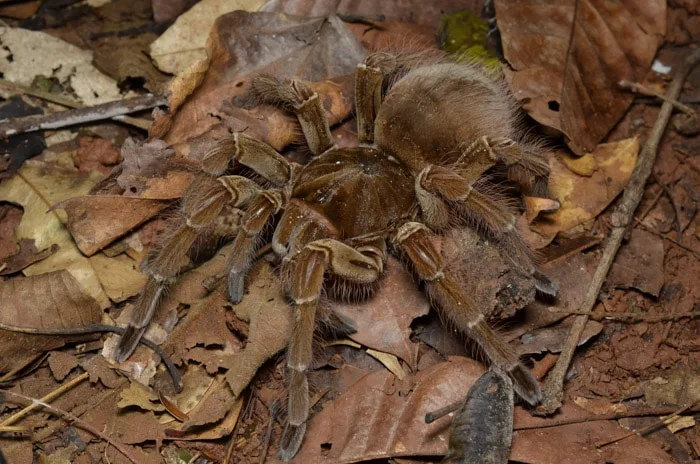
The goliath birdeater is the largest of the Amazon Rainforest spiders. In fact, it’s the world’s largest spider in terms of size, weighing 175g and growing up to 5.1 inches. (Talk about a creepy Amazon fact!)
This dinner plate-size tarantula is usually tan, light brown, or golden-hued barbed hairs. While females can live up to an incredible 25 years, males usually breathe its last within 6 years.
This creepy jungle spider mates in the dry season, and as typical for these animals, the female devours the male after copulation. The female then goes on to lay 100-200 eggs which hatch within 6 to 8 weeks.
Can you imagine that many new spiders every 2 months?!
When threatened, they rub body parts together to produce a high-pitched noise and release urticating hairs that cause itching and stinging. They have the ability to pass venom through their bites, but their venom is mostly harmless to humans.
For food, the goliath birdeater preys a variety of animals, including worms, insects, snakes, and scorpions. Despite their name, they rarely hunt birds.
Rainforest spider fact: Although they more regularly eat insects, rodents, snakes, and bats, the Goliath bird-eating spider got its name when a researcher witnessed one eating a hummingbird while in an expedition.
2. Giant fishing spider (Dolomedes)
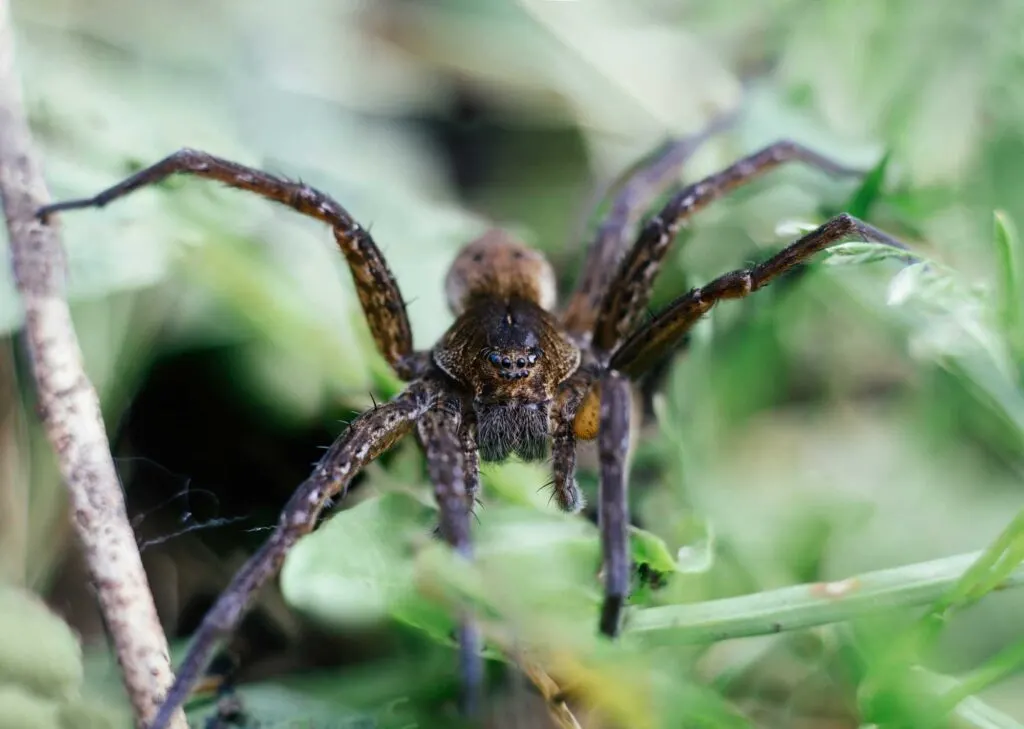
This unique arachnid lives near water and is among the few huge spiders in the rainforest that can walk on water, stay up to one hour underwater, and even spin webs in water.
By raising their legs and letting the wind propel their body along the water surface, this Amazon Rainforest spider can perform the cool trick of sailing on the water, thus saving energy.
They’re mostly brown in color, with dark spots on their abdomen and two thin lines running along the backs of males. Certain species of females measure up to 5 inches, while the 3-inch males have longer legs.
During mating, the male immobilizes the female by wrapping her with silk. She can then hatch up to 100 eggs after 5 weeks.
The giant fishing spider enjoys eating lizards, insects, tadpoles, and fish – catching them underwater and bringing them to the surface to eat. Most males live up to 16 months, while the females may live up to 2 years.
3. Jumping spider (Salticidae)
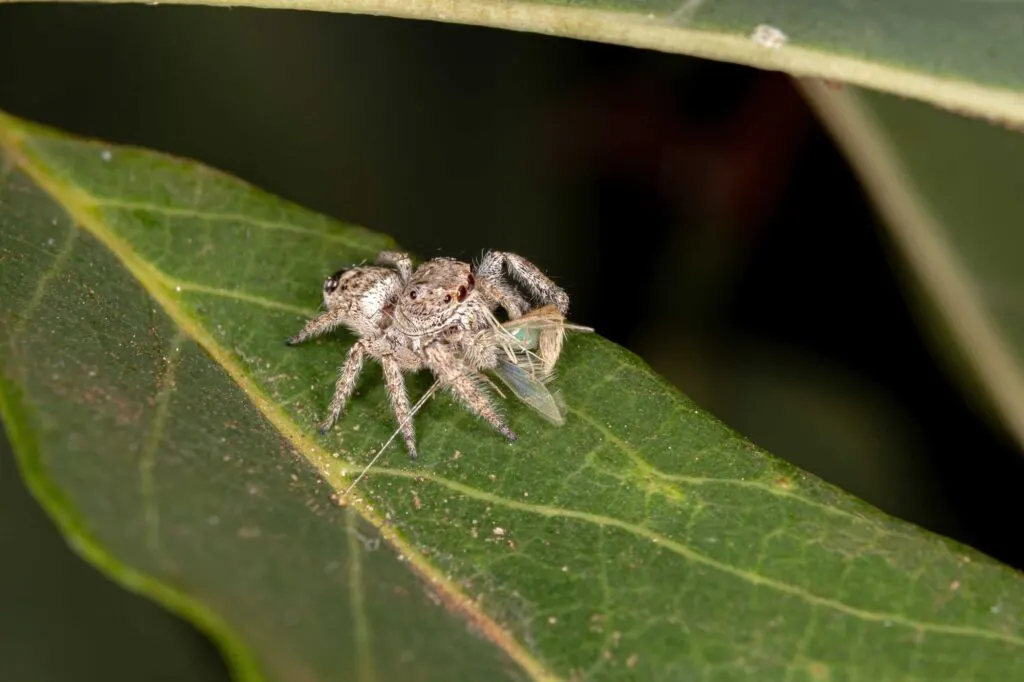
These spiders are members of the largest family of arthropods in the region, with over 6000 species of spiders.
Beyond that, they have the best vision compared to other Amazon Rainforest spiders. Their brightly colored patterned bodies and 4 pairs of eyes make them easy to identify.
They can be black, brown, tan, or gray and have feathery hair, colorful and iridescent. This spider is a superb hunter due to its 8 eyes and the ability to jump up to 50 times its 1-inch body length.
Mating is a colorful activity, with rituals employing visual and aural components. This jungle spider usually feeds on ants and flies, but some species enjoy nectar and plant matter.
Jumping spiders are the friendliest spiders on this list and are not harmful to humans at all. Despite the fact they are carnivorous by nature, these cute tiny jumpers tend to shy away from humans.
4. Pink-toed tarantula (Avicularia avicularia)
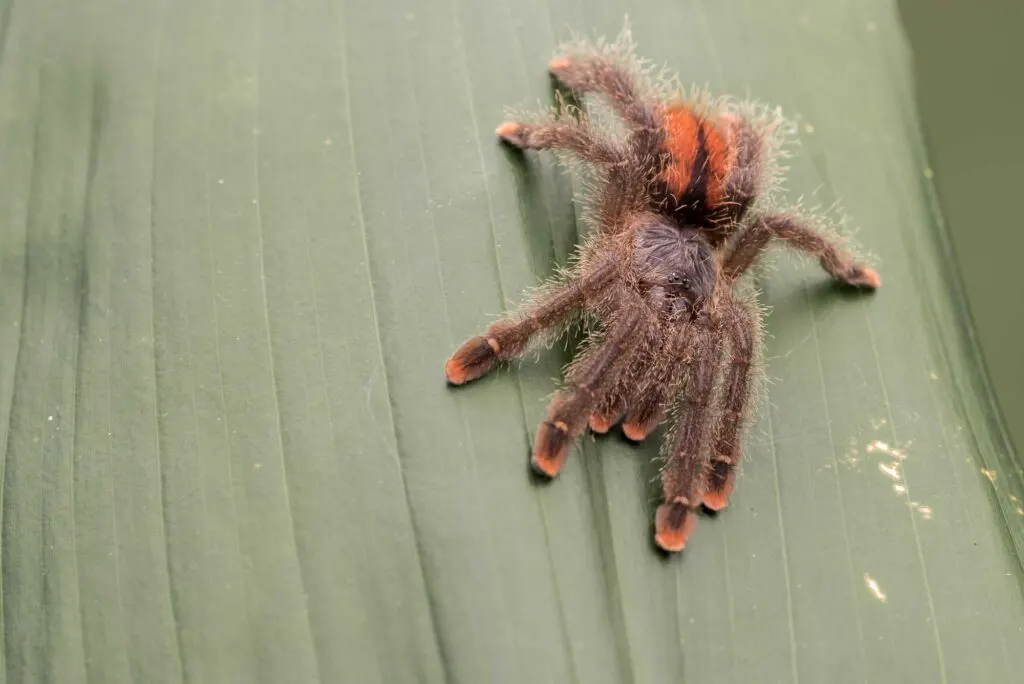
This Amazon Rainforest spider, also known as common pinktoe, has a dark-colored body, pinkish feet, and measures up to 6 inches with abdominal coloration ranging from yellow to violet at maturity.
Pink-toed tarantulas live on trees in the tropics and in areas with high humidity. They’re mostly docile and can expel fecal matter when threatened.
This particular spider of the tarantula family can lay 50 to 200 eggs, hatching in 8 weeks. Males have a lifespan of 3 years, while females, prone to cannibalism after copulating, may live for up to 12 weeks. Their diet consists of crickets, grasshoppers, moths, roaches, and lizards.
5. Brazilian wandering spider (Phoneutria fera)
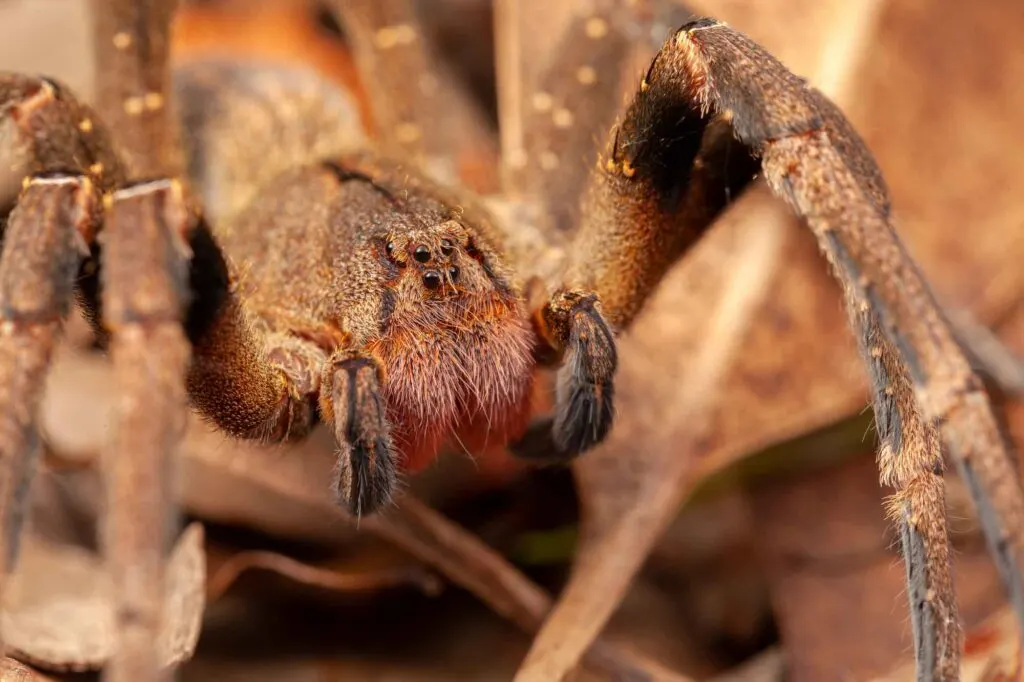
This Amazon Rainforest spider is easily the most dangerous of all spiders in the jungle. Highly aggressive and venomous, one bite from this spider can be fatal to humans in under an hour.
In appearance, it’s hairy, reddish, or brown in color, sometimes with black spots on the belly.
This spider has a 3-inch body with a wide leg span of 7 inches. It is one of the spiders in the Amazon that do not build webs, instead preferring to move across the rainforest floor at night.
They usually mate in the dry season, where rituals include dancing and fighting one another for the females. The female often finished the male once the act is over. She can store sperm until she’s ready to fertilize the eggs and lays up to a thousand eggs at once.
Beyond that, it’s not unusual for arthropod predators to hunt vertebrate prey in the region. In fact, their diet includes Amazonian frogs, insects, reptiles, and other spiders in the rainforest.
Rainforest spider fact: They are also called banana spiders as they occasionally turn up in shipments of bananas to the USA!
Learn more about the Amazon Rainforest animals
To deepen your understanding of the wide range of animals in the Amazon Rainforest, you might want to browse my other articles where I talk about the monkeys, mammals, and other invertebrate animals that live in this tropical forest.
But, if you want to learn more about other animals in Brazil, not only in the rainforest, you might want to check this guide I just linked above.
Did you like this post about the Amazon Rainforest spiders? Then send it to fellow spider enthusiasts who would like it too!
